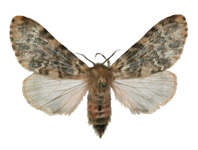Abstract
We describe two new species of Ameiva Meyer, 1795 from the dry forest of the Northern Peruvian Andes. The new species Ameiva nodam sp. nov. and Ameiva aggerecusans sp. nov. share a divided frontal plate and are differentiated from each other and from their congeners based on genetic (12S and 16S rRNA genes) and morphological characteristics. A. nodam sp. nov. has dilated postbrachials, a maximum known snout-vent length of 101 mm, 10 longitudinal rows of ventral plates, 86–113 midbody granules, 25–35 lamellae under the fourth toe, and a color pattern with 5 longitudinal yellow stripes on the dorsum. Ameiva aggerecusans sp. nov. has not or only hardly dilated postbrachials, a maximum known snout-vent length of 99.3 mm, 10–12 longitudinal rows of ventral plates, 73–92 midbody granules, 31–39 lamellae under the fourth toe, and the females and juveniles of the species normally exhibit a cream-colored vertebral stripe on a dark dorsum ground color. We provide information on the intraspecific variation and distribution of A. concolor. Furthermore, we provide information on the environmental niches of the taxa and test for niche conservatism.

